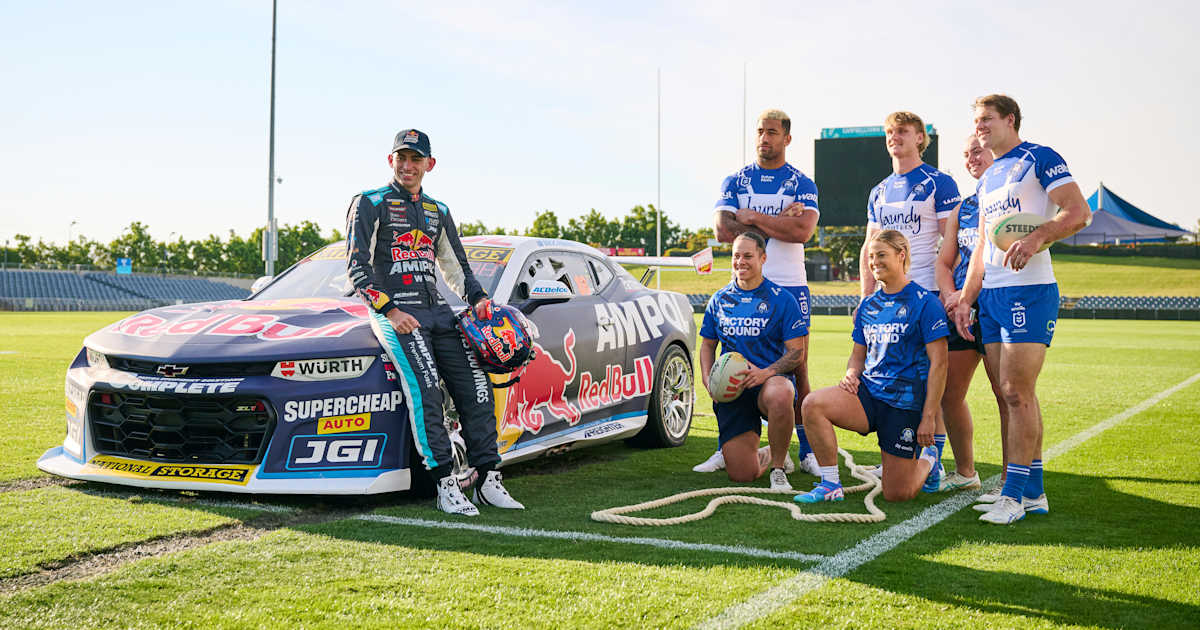Red Bull and the National Rugby League have formed an exciting partnership, uniting two powerhouse brands that are built on excellence.
The partnership sees Red Bull – one of the most recognised brands in the world – become the official energy drink partner of not only the NRL and NRLW, but also a number of showpiece events including State of Origin and the Pacific Championships tournament.
01
History of the National Rugby League
While the National Rugby League was formed in 1998, rugby league has actually been played in Australia since 1908.
It was originally split in two competitions – one in New South Wales (NSWRL) and one in Queensland (QRL). However, the make-up of these competitions underwent significant changes in the 1990s.
The NSWRL and QRL merged in 1995 for the first Australian Rugby League (ARL) season. But a rebel competition called the Super League was launched in 1997 and threatened to destabilise rugby league in Australia.
The Super League lasted just one year though and in 1998 the game united under the National Rugby League banner.
There are currently 17 teams in the NRL with 10 based in New South Wales and four in Queensland, while there’s also a team in Canberra, Melbourne and New Zealand.
The Queensland-based Dolphins are the competition’s newest franchise after joining in 2023. The NRL will expand again in 2027 when the Perth Bears enter and by 2028 it will be a 20-team competition with an historic Papua New Guinea team set to also join.
It is one of the most celebrated sporting codes in Australia, with New South Wales and Queensland particularly embracing the tribalism that rugby league is built on.
That is evident each year when the State of Origin series consistently rates as the most-watched television program. In fact, the third game of this year’s series pulled in over 5.6 million eyes and recorded the highest BVOD (broadcast video on demand) audience of all time.
But the true success of the NRL stems from the popularity of rugby league at a grassroots level. Over 200,000 people registered to play for community-based clubs last year to take the total participation number to approximately 1.03 million in 2024, which is a 20% increase year-on-year.
With representative teams starting from 16-years old, there’s a clear pathway for young Australians to pick up a footy at six-years old and play right through to one day become an NRL or NRLW star.
02
The Ins and Outs of the NRL
The NRL runs from March to October and is made up of 27 regular rounds followed by a four-week finals series. The grand final is played at Sydney’s Accor Stadium on the Sunday of the Labour Day long weekend in New South Wales.
Teams must finish in the top eight to qualify for finals but they’re rewarded even further if they finish higher. A top four finish gives a team a second chance if they lose in the first week, while a top two finish guarantees their first game is played at their home ground.
A game is made up of two 40-minute halves with a 15-minute half time in between and the rules are straightforward – the most points at the end of the 80 minutes wins. Teams can score four points with a try, two points with a goal or one point with a field goal.
In 2021, a two-point field goal was introduced, which is an added incentive for players to attempt a field goal from 50-metres out. Only 19 have been successfully kicked with Penrith’s Nathan Cleary and Brisbane’s Adam Reynolds sitting equal first with four each.
An NRL team is made up of 17 players, with 13 starting and four on the bench.
Understanding the positions in the NRL is essential for appreciating the speed, strategy and physicality that define the game. Each role – from the powerful forwards to the agile backs – play a crucial part in a team’s success on the field.
The 17-man team can be broken down into three – the spine, outside backs and forwards. Check out an NRL Positions guide here.
03
Rep games and the NRL’s showpiece events
Rugby league fans are treated to representative games throughout the season too. The first is the Indigenous vs Maori All Stars clash, which is held before the NRL season is kicked off. Only players with Indigenous or Maori heritage are eligible for this game.
The renowned State of Origin series takes place mid-year with New South Wales and Queensland facing off in three games. Players must have either been born or resided in NSW or Queensland before their 13th birthday to be eligible to play.
Origin is rugby league’s biggest showpiece event and the three games are usually the most anticipated each year – aside from the NRL grand final, of course!
International footy takes place after the completion of the NRL season in a tournament called the Pacific Championships. Australia, New Zealand, Tonga, Samoa, Fiji, Cook Islands and Papua New Guinea compete – however this year the Australian rugby league team will be travelling to the UK to take on England in a three-game series dubbed ‘The Ashes’.
Rugby league has also entered the United States as part of a five-year deal with Allegiant Stadium in Las Vegas that sees four NRL teams travel to the entertainment capital of the world to play their Round 1 fixture.
While they are not representative games, the Vegas games are also considered the NRL’s biggest showpiece event alongside Origin given the international exposure it generates for the game.
You may have seen the NRLW acronym before and wondered how it differs from the NRL – it’s the women’s competition!
The NRLW has grown tremendously since its inaugural season in 2018. It started out with four teams, who played each other once and the two teams that finished the highest on the ladder faced off in a grand final.
Fast forward seven years and the NRLW is now made up of 12 teams that play 11 rounds before a three-week finals series.
Most of the NRL rules were transferred over to the NRLW, however the women’s game 10 minutes shorter.
05
NRL x Red Bull Partnership
The partnership kicked off at the start of 2025 and has spanned across multiple elements of the sport including the NRL and NRLW, the State of Origin series, All Stars and the Round 1 fixtures in Las Vegas.
To celebrate the launch of the partnership, Air Race champion Matt Hall performed a Red Bull Gives You Wiings Aerobatic Display at a touch football event on the iconic Bondi Beach last year.
Since then, two NRL clubs have jumped on board and announced their own specific partnerships with Red Bull.
Four-time premiers Penrith Panthers shared the news of their partnership in March with a special video message from F1 champion Max Verstappen.










